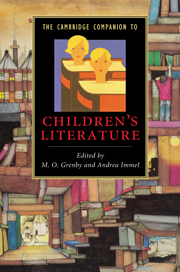Book contents
12 - Changing families in children’s fiction
from Part III - Forms and Themes
Published online by Cambridge University Press: 28 November 2010
Summary
Families, like schools - and for many of the same reasons - have been a constant presence in children's literature, but the way they have been represented has changed considerably over time in line with shifts in cultural needs and expectations about both families and children. The following discussion traces these changes by examining the way the nuclear family is introduced in early children's fiction, consolidated and repositioned during the nineteenth and early twentieth centuries, falls into disrepute in the mid to late twentieth century, and is tested for obsolescence at the start of the new millennium.
Meet the family: families and children in early children's literature
Other contributors to this volume discuss parent-child relationships before the eighteenth century, providing glimpses of the way families were organised in the pre-modern period. In Centuries of Childhood (1960), the French historian Philippe Ariès describes this as a movement from the communal model, in which the 'family' incorporated networks of dependants who were not always linked by blood, which prevailed from the Middle Ages to the end of the seventeenth century, to the small, intimate nuclear family familiar today.
- Type
- Chapter
- Information
- The Cambridge Companion to Children's Literature , pp. 193 - 208Publisher: Cambridge University PressPrint publication year: 2009
- 5
- Cited by

